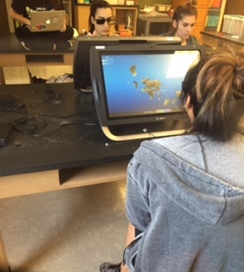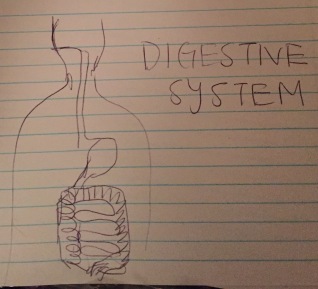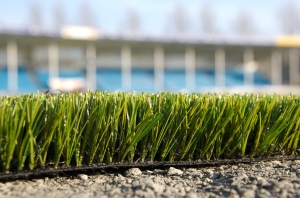For my multilingual project, I want to bring forth to my audience an interview that I had with my grandpa. During sophomore year in my humanities class, I had to interview someone I knew about their immigration into America. I chose to interview my grandpa because he was born and raised in Hong Kong, but still managed to successfully raise 7 children who now each have a family of their own in America. Through this interview, my grandpa shares his experience before, during and after the civil war and how he first adapted to the change in environment, language, and culture. This interview was conducted in Chinese.
Author: mlui17
Class Cameo- Cat Dissections

During this week of Sports Medicine, the class performed a pinnacle event that many students look forward to when signing up for this course, dissect cats. Although I have dissected a pig in a previous science class, dissecting a cat allowed me to further understand the anatomy of not only animals, but its similar characteristics to humans as well. Through this week’s classes, I learned where the organs of the digestive, respiratory, and reproductive systems were located and I also learned how to skin a cat.
Although dissecting animals definitely raises questions about humane morals, dissecting animals also gives students a chance to explore science to a fuller extent. According to an article from YorksDispatch, students in the 7th grade from Harrisburg Academy were given the opportunity to dissect squids. Not only did the students not object to the unpleasant smell of the squids, but the students showed great interest when introduced to the lab. Teacher, Sally Ballantine, noted that this opportunity gives children a chance to gain interest in a potential career for their futures, and also gives students a hands-on experience they would not find anywhere else. Thus, while dissecting animals raises many questions, some dissections may prove to be helpful for future discoveries to come.
This week’s focus revolved mainly around the cat dissection. First we learned about the safety precautions/rules revolving labs in general, especially a dissection
- wear safety goggles at all times
- wear a lab coat to prevent preservatives from getting on the skin and clothes
- wear rubber gloves
- cautiously handle sharp objects (scalpel, scissors)
- do not chew gun
- tie hair up
Then, we got into three groups of 3 and each group dissected one cat; there was one ginger cat, one long haired cat, and one white cat. For a majority of the first class, we skinned the cat; first using scissors to start the incision, we cut through the cat’s mid-line located on his/her stomach. Then, using the scalpel, we skinned the cat, separating the layer of fur and skin from the connective tissue which was a web-like material.
The second class mainly consisted of identifying the organs of the reproductive, digestive, and respiratory systems, in addition to playing with the Zspace computer to virtually dissect a cat using 3D technology. Shortly after class started, Mrs. Kahn helped us take the cats out of its bags again, then we went to work dissecting the cat. After cutting through the ribs with scissors, a process that took quite some time, we spent time identifying organs within the cat. Some organs included:

- liver
- gallbladder
- lungs
- bladder
- heart
We were also joined by the AP Biology class who shared their thoughts on the anatomy of the cat as they compared the cat’s organs to those from the pig they recently dissected. In addition to the Biology class, we were also accompanied by Dr. Hegarty, Mrs. Girard and Ms. Chen who helped us identify certain organs within the cat.
After we had finished dissecting the cat and cleaned up the tables, Mrs. Kahn introduced the class to the ZSpace computer which was a touch screen computer that had 3D
technology. On the computer, we took apart and examined the many layers of a cat; from skinning the cat, to seeing its skeletons, to unveiling its organs, Zspace brought cat dissections to a different level both virtually and physically.
*hyperlinked videos and websites show real life cat dissections that may be too explicit for some.
I thought this lab was particularly successful in gaining a fuller understanding of the body’s organs that cannot be experienced in a different way. While this dissection could have been watched on youtube or read about online, the whole process in general of putting on a lab coat and wearing gloves and goggles gave me a full experience of what being a scientist, nurse, and/or doctor is like. Overall, I thought this lab increased my comfort level towards dissections and dead animals in general, and is an essential activity to further ones knowledge if one is interested in entering the medical field.
DT Project- Concussions
Did you know, concussions contribute to 30% of deaths in the US per year? According to Dr. Broglio, although everyone is a potential victim of concussions, children, especially young athletes, tend to be more susceptible to the injury! It may be impossible to eliminate concussions completely, but there are definitely ways to prevent at least half of the collisions in youth sports. One sport that is known for its constant tackling is football. According to momsteam,youth football players were 26 times more likely to get concussed in a game than in practice. Likewise, high school football players were 7 times more likely to receive concussions.
A concussion is defined as “temporary unconsciousness caused by a blow to the head. The term is also used loosely for the aftereffects such as confusion or temporary incapacity.”According to the Mayo Clinic, concussions are traumatic impacts to the brain that alter the way the brain functions. While soccer, basketball, and wrestling are contact sports known to cause concussions, one of the highest recorded sports with concussed athletes is football, specifically when played by young athletes. According to ESPN staff writer Tom Farrey, NFL players who began playing tackle football before the age of twelve performed worse on the estimated verbal IQ; executive function, which includes reasoning and planning; and memory impairment in comparison to players who started playing later! Thus, this data shows how important it is for youth football players to not only be cautious when playing football, but also be supplied with safe gear because this will undoubtedly impact their futures.
Learn more about concussions in youth football here!
For this project, my partner Juliana and I brainstormed a variety of ideas to decrease concussions in youth football.
- We thought about addressing the problem at its source by creating a new helmet with more padding to decrease the impact of a collision, but recreating a helmet in the given time, we recognized, was nearly impossible.
- We then thought about having football athletes wear concussion headgear under their helmets; instead of acting as a form of healing and prevention for a second concussion, the headgear would act as a form of prevention to avoid the concussion in the first place. Though this idea could potentially work, we found difficulty testing this idea.
- Another idea we had was having more hands-on exams after a concussion to make sure someone is ready to go back because most high school athletes and coaches encourage athletes to return as soon as possible. It is extremely important to ensure that an athlete is ready to return to play because people become more susceptible to concussions after the first blow, but we recognized that it was also difficult to test this idea as we could not find a subject and knew that students could potentially be dishonest during this process.
- Juliana and I also thought of having coaches implement safe, less contact drills during practice because with practices being everyday, young athletes are at high risk of concussions with the constant contact during practice. Again, Juliana and I strayed from this idea because coaches and players could always be dishonest as sometimes a coach may be more fixed on winning than an athlete’s well being.
- Finally, after talking to Mrs. Kahn, we decided on the idea to implement rules for the helmet to ensure that it is in the best condition possible. After much research on the rules of football, I found that there were few rules regarding the status and quality of helmets during games and practices. Recently, the nfhs came out with a new rule stating that players who take their helmets off while the ball is live are subject to sit out one play. While this rule partially addresses a possible risk, more rules should be put in play regarding helmets in high school football.
In hopes of decreasing the amount of concussions in youth football, Juliana and I wrote a letter entailing new rules regarding the inspection of helmets to ensure schools are being proactive and aware about the condition of their gear (below).

- The first rule was created because most schools inspect their helmets yearly. By the end of one season, athletes who constantly take big hits are at high risk of getting a concussion.
- We chose to include the second rule because many schools choose to keep their helmets for at least 4 years because it is cost effective, but with more than 15 games and over 90 practices a year, the helmets should undoubtedly be replaced often.
- In addition to the coaches being educated about concussion prevention, athletes should be aware too because they are the ones using the helmets, thus the ones that are most aware of the wear and tear of them.
- Although the fourth rule is not about the condition of helmets, Juliana and I chose to include this because often, athletes and coaches are eager for a quick return. In fact, according to the Southwest Athletic Trainers Association, 15.8% of football athletes return to playing sports on the same day. With this rule, the doctor will be an unbiased third party that only cares about the well being of the athlete.
- While gear plays an important role in concussions, another contributing factor is being educated on the topic, thus we are requiring coaches to attend an annual seminar on concussions.
- Often, athletes are dishonest after a big hit because he/ she wants to continue playing. With stricter examinations, trainers can better protect the well being of the athlete.
- Having practice five days a week puts athletes in a very vulnerable position to get a concussion. Thus, Juliana and I are implementing the rule that coaches must practice safe drills that do not include contact when not necessary to prevent concussions during practice.
- In hopes of schools following these rules, we included consequences such as ineligibility to compete.
To test our prototype, we emailed schools in the Bay Area asking them questions about their precaution routines. The schools include , De le Salle, Saint Ignatius College Preparatory, Sacred Heart Cathedral, Hillsdale High School and Riordan High School.
We asked the schools four questions:
1) How often does someone inspect football helmets for damages?
2) How often are helmets replaced?
3) How common are concussions on your team?
4) How do you choose the type/brand of helmet for your team?
For the first question, 4/6 schools replied saying they inspect helmets every year after the season. Currently, there is no rule that requires helmets to be checked, but with at least 15-20 games per season, constant inspections should be expected.
For the second question, a majority of schools replied saying helmets are replaced every 3-4 years, with the obvious broken helmets being replaced immediately. In addition, the schools also send helmets to the manufacturer after every season to test the longevity of the helmet. Although helmets are being inspected annually, 3-4 years of usage is equivalent to about 300 uses and over 500 hits, which may prove to be unsafe for the athlete.
Generally, according to the coaches, more of the freshman and junior varsity players got concussed due to inexperience, which prove the importance of learning proper technique. Not only does the coach need to be educated, but the athlete should be too, especially regarding form.
For the last question, coaches answered saying they choose what is most comfortable and protective for the player, as well as where it is made.
Check out this info graph to see how coaches responded to our questions! (Due to privacy reasons, the schools which these answers are from are not displayed)

Overall, I think Juliana and my prototype could be improved by giving schools a supply of professionals to examine the helmets because some schools may not have the funding to hire a professional to inspect the helmets after each hit. In addition, the prototype could be improved with not only having a seminar on concussions but also having a seminar on proper technique for Junior Varsity and Freshman coaches to decrease the number of concussions on less experienced teams. From there, coaches can teach their teams proper technique in small sections as football teams tend to have large teams. With these improvements, hopefully concussions will decrease in youth sports and children will have a better chance to extend their time playing a sport they love.
Exercise Improves Brain Function
Did you know exercise can improve brain function and potentially be the “smart pill” that will make people more focused and productive? Writer, Wendy A. Suzuki, definitely did. In her article “A neuroscientist says there’s a powerful benefit to exercise that is rarely discussed” Suzuki explains the data that connects exercise to an increased level of focus. Suzuki connects this increased level of focus to our blood flow, as an increased blood flow will increase brain function. In addition to blood flow, Suzuki connects exercise to one’s hippocampus: the area of the brain responsible for long term memory. 
Personally, I was not surprised by this revelation as my P.E. teacher in elementary school had mentioned how exercising before doing homework helps one increase focus. Although I was aware of the concept, I did not know there was so much science connected to the theory. I thought it was interesting how only 30 minutes of exercise could improve one’s mood because exercise seems like such a disconnect in comparison to one’s mood. Not only does exercising help me increase focus, but it makes me feel better and more accomplished as well.
With that being said, schools ranging from all age groups, should encourage more exercise. Often high school students are stressed out with minimal time to exercise. With proven data that exercise increases focus, teachers should implement exercise before every class. Read more about how to include more exercise into one’s daily routine!
Learn more about how exercise improves brain function in this Forbes article!
The Digestive System and the Immune System- and how they affect athletes
 Although it may seem surprising, from contrasting systems such as the circulatory system to the nervous system, the body is interconnected in many ways! In order for the body to function productively, each of these systems rely on each other to work efficiently in order to maintain a healthy body. Two of the eleven systems that work together in particular are the digestive and immune systems.
Although it may seem surprising, from contrasting systems such as the circulatory system to the nervous system, the body is interconnected in many ways! In order for the body to function productively, each of these systems rely on each other to work efficiently in order to maintain a healthy body. Two of the eleven systems that work together in particular are the digestive and immune systems.
The digestive system specializes in breaking down food into smaller units and consists of the liver, gallbladder and pancreas. According to The National Institute of Diabetes and Digestive and Kidney Diseases, the digestive system works to break down food into nutrients.
The immune system on the other hand, works to fight off germs. According to Kids Health, the immune system consists of a group of cells, tissues and organs that work to protect the body.
Now you may be wondering, how are these contrasting systems interlinked? According to Dr. Isaac Eliaz’s article from the Huffington Post, each system is dependent on one another. If one system isn’t functioning, the others will not work as effectively. With that being said, the digestive system’s gastrointestinal tract (GI tract) is closely linked to the immune system as the tract is responsible for creating a type of good bacteria that aids the immune system when fighting off pathogens and germs.
While eating healthy and receiving necessary amounts of vitamins and nutrients is

important for everyone, it is vital for athletes. Athletes have to be mindful of their diets because a healthy diet will allow athletes to perform to the best of their abilities. According to the Marathon Charity Cooperation, athletes use a lot more energy while training, and as a result require more energy to repair muscles and maintain good health.
With that being said, to stay healthy, athletes and people in general should stray from consuming chemical- filled foods, and focus on consuming foods that will benefit and restore the body. Some foods that directly aid the immune system according to Dr. Isaac Eliaz include:
- zinc
- cinnamon
- ginger root
- fish oil
 While Dr. Isaac Eliaz recommends these food for athletes, it is important for everyone to have a healthy diet to maintain a healthy body.
While Dr. Isaac Eliaz recommends these food for athletes, it is important for everyone to have a healthy diet to maintain a healthy body.
What Has Shaped My Views On Nutrition?

Nutrition is a very debatable topic. Although most people would say nutrition is important for a healthy lifestyle, many people are concerned with one’s eating habits due to their physical appearance. Since I was little, I have been taught that carbs are the leading factors of gaining weight. Although my perspective has somewhat changed, I have encountered many experiences that support how an excess of carbs is not necessary for a healthy diet. My parents are not ones to force a healthy diet, but what has shaped and motivated me to a healthy diet is volleyball. What I eat during and after volleyball practices, games and even the season in general will greatly affect my performance level. As a result, my interest in volleyball has pushed me to do research on nutrition, which is what ultimately shaped my views on nutrition.
Nutrition is defined as “the process of providing or obtaining the food necessary for health and growth.” In my perspective, nutrition is about having a balanced diet and being aware of one’s food consumption. It is important to make smart choices with the topic of nutrition as ultimately, it is our own bodies that are being affected.
How I Stay Engaged
With one school year lasting 9 months, it is often difficult to stay engaged and focused; it is sometimes difficult to stay focused even within an 80 minute class period! Although sometimes I may stray from the task at hand, I try to connect my interests with what I am learning to stay focused. From my own mindset, to how a teacher teaches, to the environment my classmates bring to a room, every factor contributes to how I stay engaged throughout the school year. Below is an infograph on a few ways on how I stay engaged!

Heart Disease Prevention
Did you know heart disease is the leading cause of death for women? Every one minute, a woman suffers from heart disease! But this can be prevented. Still don’t believe me? Visit the Centers for Disease Control and Prevention for exact numbers! A variety of factors can lead to heart disease.
For example:
- smoking
- an unhealthy diet
- lack of exercise
- inheritance
According to the World Heart Federation, one of the most preventable contributors of heart disease is an unhealthy diet and lack of exercise. With an inconsistent exercise regime, one will have high blood pressure and cholesterol, thus creating plaque in blood vessels that will prevent blood and oxygen from reaching the heart. A lack in oxygen and blood will result in heart disease or stroke. Did you know exercising for at least 30 minutes every day can decrease your risks of heart disease dramatically? According to livestrong.com, the most effective type of exercise is cardio. Here are some ways that one can increase their physical activity throughout the day.
With adults and even teens constantly being busy in this  generation, many people lack exercise. According to a survey done by CBS news, only 20.6% of adults meet the recommended amounts of exercise! In attempts to increase physical activity in each person’s life, I would like to make a fitness app, titled 360 Health. This app would cover all the main components to a well rounded and healthy lifestyle, thus naming the app 360 Health. The main component of the app is the exercise reminders. With teens and
generation, many people lack exercise. According to a survey done by CBS news, only 20.6% of adults meet the recommended amounts of exercise! In attempts to increase physical activity in each person’s life, I would like to make a fitness app, titled 360 Health. This app would cover all the main components to a well rounded and healthy lifestyle, thus naming the app 360 Health. The main component of the app is the exercise reminders. With teens and
adults attending school and work for a majority of their day, the app would schedule ten 3 minute exercises throughout the day based on one’s schedule. The app will include instructional videos that will educate the audience on correct form. I plan to incorporate simple exercises such as jumping jacks, push ups, sit ups, lunges, high knees, jogging in place and many more. Watch some of these exercise videos below! Courtesy of Jessica Beering!
To maximize a student’s opportunity to exercise, I hope to incorporate 3 minute exercises in the beginning of class. Not only will this give students motivation while exercising with classmates, but according to Harvard Health Publications, exercise is proven to increase one’s focus.
In addition to the physical activity of one’s lifestyle, one’s daily food consumption is an important part to a healthy lifestyle as well. Although some people may choose to eat unhealthily because of their cravings, most people do not know what is classified as a healthy meal other than a salad. With that being said, I would dedicated a section of the app to eating healthy. I would include healthy recipes, a food tracker, as well as a scheduled meal prep/plan. To motivate people, I will also include an Instagram account that motivates people to eat healthy through pictures.
Visit the app’s Instagram page!
To get a glimpse of my app, click this image!
To test my prototype, I asked 1 classmate to manually set 10 alarms to exercise throughout the day for 3 minutes. To test how exercise would work in a class environment, I requested that my English teacher, Mr. Currier, set three minutes aside during his class to have students exercise. Here is the video below!
After testing my prototype and receiving feedback from my classmates, I found that although my idea was in its developing stages and I still have a lot to improve on, the first runs went pretty well. After exercising as a class, I noticed that the class enjoyed the “dance party” and took the time to relax. After asking the class if they would like to exercise again, 95%  said they would. Before class, I asked my classmate to lead the exercise session, and in the future, this leadership opportunity could give people a chance to express themselves. In contrast to exercising as a whole, my friend Jessica Beering volunteered to exercise for ten 3 minute intervals. As a student with many AP classes, she has a busy schedule, so I thought she would be the best candidate to test my app. After asking her what she thought about the exercising, she mentioned how it was difficult to exercise throughout the day, but tried to fit in workouts before and after lunch. With many people asking her why she was exercising, she said it felt a little awkward. As a solution, I think my app would be most efficient and effective if the whole school set aside three minutes at the start of each class period to exercise. Not only will this decrease every single person’s risks of heart disease, it will also bring everyone closer and increase student’s focus before a class.
said they would. Before class, I asked my classmate to lead the exercise session, and in the future, this leadership opportunity could give people a chance to express themselves. In contrast to exercising as a whole, my friend Jessica Beering volunteered to exercise for ten 3 minute intervals. As a student with many AP classes, she has a busy schedule, so I thought she would be the best candidate to test my app. After asking her what she thought about the exercising, she mentioned how it was difficult to exercise throughout the day, but tried to fit in workouts before and after lunch. With many people asking her why she was exercising, she said it felt a little awkward. As a solution, I think my app would be most efficient and effective if the whole school set aside three minutes at the start of each class period to exercise. Not only will this decrease every single person’s risks of heart disease, it will also bring everyone closer and increase student’s focus before a class.
Learn more about heart disease!
*App created using Appy Pie
Class Cameo 10/26-11/3
Although during the week of October 26th to November 3rd consisted of only two class periods, I learned a lot. This particular week covered the cardiovascular system, as well as tested our knowledge on the heart diagram. In addition, the class was assigned a case study where students were given a real life situation and students had to identify/diagnose the potential problems of an elderly couple given their daily routines. At the end of the week, I learned about the cardiovascular and respiratory system’s diseases and began the EKG lab where we learned the basics to a healthy and unhealthy heart beat.
a healthy and unhealthy heart beat.
Through the cardiovascular system web quest, Ms. Kahn provided a link from The Franklin Institute along with some guiding questions to learn more about the blood vessels, the right and left atrium and ventricles, the aorta, and a lot more!
The lab the class completed, which was my favorite assignment this week, was the case study. The case study was titled “A Healthy Retirement?” and revolved around an elderly couple. Each individual had some health risks. With Jim being overweight, smoking, having high blood pressure, and being 68 years old; and with Nancy being overweight, being easily tired, having a history of osteoporosis, and having high glucose levels, both Jim and Nancy were at risk of heart disease, lung cancer, diabetes, and stroke. I liked this lab particularly being it gave me an opportunity to tap inside the job of a doctor and diagnose patients with certain risks based on their living habits. Not only did I learn to pay close attention to details, but I also got a real life experience of being a doctor.
Throughout this week, we learned about the cardiovascular system. A current event revolving this topic is from EurekAlert!, titled “Study suggests potential connection between low blood sugar and cardiovascular problems.” Newly released on November 3rd, 2015, this article discusses how the body responds to cardiovascular stress and that the cardiovascular system is compromised during episodes of hypoglycemia. Hypoglycemia is “when the level of sugar (glucose) in the blood is too low. Hypoglycemia occurs most often in diabetics who must inject insulin periodically to lower their blood sugar.” So, all in all, this study points out the potential risks of restricting one’s diet because it leads to low blood sugar, and low blood sugar can affect the heart’s functions. A solution to this problem is to eat a healthy and balanced diet.
KQED Do Now- Artificial Turf vs. Natural Turf
This week’s do now focused on the pros and cons of installing and using turf vs. the natural turf, aka lawn. KQED emphasized new data that supported how the materials used to make turf contained harmful chemicals that can lead to cancer. Although these risks should be taken into consideration, KQED also mentioned that the alternative of having grass would require higher maintenance and potentially cause more injuries, something we do not need more of on a football or soccer field. With this dilemma, KQED proposed the question “Should We Install Fields of Artificial or Natural Turf?”

Although scientists have found that turf contains harmful chemicals, I think we should continue using artificial turf, but find a different material to make it. Not only does installing a lawn dramatically increase the use of water to keep the grass fresh, but natural turf is known to have a more slippery surface that can lead to more injuries. Another con when using natural turf is the maintenance. Natural turf will constantly have to be mowed and watered, thus increasing the costs of fields that are used year round.
Click the info graph to learn more!
With turf being used for over 40 years, scientists should be able to create a similar material that is both less harmful and more effective. For that reason, I think artificial turf should continue to be used as its pros outweigh the cons.


